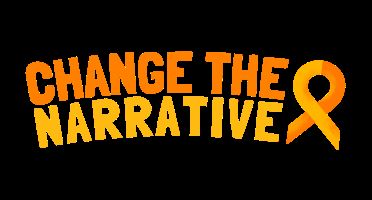World Suicide Prevention Day (WSPD); Start the Conversation
Suicide Prevention: How we can make a difference together;
Changing the Narrative of Suicide: – Start the Conversation!


By, Pius Daniel
By changing the narrative, we can collectively contribute to a world where fewer lives are lost to suicide.
This year’s call to action, “Start the Conversation,” reminds us that we all have a role to play in suicide prevention.
Whether by reaching out to someone in need, advocating for better mental health policies,
or simply being a supportive presence, we can make a difference.
It starts with the simple act of Talking, Listening, and Showing Up for those who are struggling.
So, go ahead, START THE CONVERSATION, now!!!
World Suicide Prevention Day (WSPD); Start the Conversation
Since 2003, every 10th day of September, the world commemorates the World Suicide Prevention Day (WSPD);
to give the opportunity to raise awareness on a very important issue which has not only affected individuals,
but also had a lasting effect on families and communities.
This year the theme of the WSPD echoes the need for us to review our perception towards the topic of suicide.
It further rings a bell for us to embrace conversation as an antidote and challenges the stigma surrounding mental health and suicide.
Start the conversation today.
Every chat, no matter how small, builds a more supportive and understanding society.
Together, we can make a difference and prioritise suicide prevention, ensuring everyone gets the help they need.
#WorldSuicidePreventionDay
In a world where mental health has become a growing trend,
and the internet, easily becoming a hunting ground for the vulnerables;
And in a country, where cost of living is gradually straining the living and lots of families find it extremely hard to give themselves the basic amenities;
it has never been more important to address suicide with compassion, understanding, and action.
At this moment, we will take a dive into the current realities of suicide,
the factors contributing to it, the stigma that surrounds it, and offer ways to engage in life-saving conversations.
By changing the narrative, we can collectively contribute to a world where fewer lives are lost to suicide.
World Suicide Prevention Day (WSPD); Start the Conversation
The Alarming Reality of Suicide
According to the World Health Organization (WHO), over 726,000 people die by suicide each year, this is equivalent to losing a life in every 43 seconds.
This devastating incident doesn’t just take its toll on the victim,
but it often comes with a ripple effect which is known to extend to the deceased’s family members, friends, and to an extent, the community.
Currently, the narrative around suicide is that of judgement.
This misleading narrative pays more attention to the act itself, ignoring the root cause of suicidal thoughts.
What this faulty narrative does is that it makes it hard for persons battling with suicidal thoughts to seek help.
This is one reason why the narrative must be changed to empathy and not judgment.
Changing the narrative on suicide requires systemic change.
It’s about shifting from a culture of silence and stigma to one of openness, understanding, and support.
#WorldSuicidePreventionDay
Understanding the Causes of Suicide
There is no doubt that mental health decadence is a primary cause of suicide.
It is also safe to say that there are other factors that have played a very significant role.
Mental Health and Suicide
This may stem from substance abuse, depression, anxiety, or bipolar disorder.
As a matter of fact, people diagnosed with mental health or substance use disorder are more prone to suicide than others.
In serious mental distress, people are more likely to disconnect with others around them.
In some cases, anxiety disorder, being uncontrollably overwhelmed with fear and panic will easily give rise to suicidal thoughts.
Some individuals with neglected mental health conditions may not recognize the severity of their symptoms,
oftentimes they find it hard to seek help due to societal stigma.
This creates an unfavourable environment where feelings of despair, spirals out of control, hence, leading to suicidal thoughts.
World Suicide Prevention Day (WSPD); Start the Conversation
Environmental Factors
There is no better time to talk about the impact of environmental factors in suicide than now.
Situations like a loss of a job, relationship breakdowns, financial strain or even the death of a loved one, can trigger suicidal thoughts.
People who are also exposed to abuse, bullying, or discrimination, are at risk of committing suicide.
Cultural and Societal Factors
A society where declaring mental health issues is seen as a sign of weakness or personal failure, will definitely discourage victims from seeking help.
Whereas, in other societies where many are unfamiliar with the topic of ‘Mental Health’;
can give rise to suicidal thoughts without much being known about a solution or a support mechanism.
Toxic masculinity is also a reflection of how societal and cultural construct can contribute immensely to suicide deaths.
The perception that men should suppress their emotions has made them more likely to commit suicide.
A 2023 study of the United Kingdom and its nations show that the male gender fall victim to suicide.
Another study had shown that although women have more suicidal attempts, men have higher rate of completed suicide.
Changing this narrative is essential to encouraging help-seeking behavior and reducing stigma amongst the male gender.
At 8PM on #WSPD,
join me in lighting a candle to show your support for suicide prevention,
to remember a loved one & for the survivors of suicide.
Warning Signs and Risk Factors
In kicking against suicide, there is need to know its signs.
Although in some cases, not everyone struggling with suicidal thoughts will exhibit the same behaviors,
there are common indicators that suggest someone may be at risk.
World Suicide Prevention Day (WSPD); Start the Conversation
Behavioral Changes
– Withdrawal from society or anti-socialism.
– Loss of interest in hobbies or activities that were once enjoyable.
– Drastic changes in eating or sleeping patterns.
– Increased use of drug substances or alcohol.
Emotional Red Flags
– Feelings of hopelessness, worthlessness, or being trapped.
– Intense guilt, shame, or anger.
– Extreme mood swings.
– Verbalizing suicidal thoughts or intentions.
Physical Symptoms
– Neglecting personal appearance or hygiene.
– Unexplained physical ailments, such as headaches or fatigue.
– Lack of energy or motivation to engage in daily activities.
Although some of these signs, when spotted may not directly point to the intent of suicide,
the simple act of showing that you care can make a significant difference.
Breaking the Stigma Surrounding Suicide
Stigmatization is a barrier that surrounds mental health,
fortunately some parts of the world have embraced the protection of one’s mental health through several means,
including medical consultancy, enactment of laws that shun behaviors like cyberbullying and its kind.
Whereas some parts are yet to be fully enlightened about the need for mental wellbeing.
Oftentimes some demography are overlooked in this awareness campaign due to certain societal perceptions or ideology,
leading them to suffer in silence.
This stigma which has stemmed across cultures, communities and social groups has made it difficult to seek needed help.
Overcoming this barrier requires restructuring perceptions and this duty sits heavy on individual shoulders and also that of the media.
World Suicide Prevention Day (WSPD); Start the Conversation
Media Representation and Its Role in Shaping Perceptions!
The media plays a significant role in shaping public perceptions of suicide.
Responsible reporting is required to change the narrative towards suicide.
This means focusing on prevention efforts, and highlighting stories of survival and recovery.
It is the sole responsibility of media outlets to help propagate the need to seek help.
Normalizing Conversations About Mental Health
The topic of mental health shouldn’t be put aside in our day-to-day conversation.
Particularly, in a time as difficult as now, a lot of people are probably experiencing mental breakdown due to financial strain,
and this might never be detectable unless there is a conversation geared towards mental health.
This starts with being open and honest, creating a safe space for others to share their struggles.
World Suicide Prevention Day (WSPD); Start the Conversation
How to Offer Support and Prevent Suicide
Listen Without Judgment: When someone opens up about their struggles, listen attentively and avoid being a judge at this moment.
Be Direct: Don’t be afraid to ask them directly.
Asking about suicide does not plant the idea in someone’s mind. As a matter of fact, it can help them feel understood.
Encourage Professional Help: It is important that you encourage that professional help should be sought after, this can be through therapy.
You can also offer to help them find resources or accompany them to an appointment if needed.
As an employer you should also be capable and willing to offer your employees the allowance to seek professional help as regards to their mental wellbeing.
Create Awareness in Communities: This can be in schools around you, your workplace or even local gatherings.
Also educating staff members to recognize signs and avoid group marginalization will go a long way to prevent suicidal thoughts.
Investing in Mental Healthcare: In Africa, mental health has been underprioritized.
In a publication by the World Health Organisation, Africa mental healthcare is severely underfunded.
There is a need for the government and private individuals to channel resources to this sector,
and make it accessible to the public to prove its relevance.
World Suicide Prevention Day (WSPD); Start the Conversation
Spreading Hope and Saving Lives
Every life lost to suicide is a tragedy,
but every life saved through prevention efforts is a testament to the power of community, compassion, and open dialogue.
Changing the narrative of suicide might not be an easy task but it is a journey necessary for everyone to embark on.
When we intentionally address the issue of suicide by addressing its root causes,
we build a world where people don’t find a solution in taking their life.
Suicide can affect every one of us.
By raising awareness, reducing the stigma & encouraging action we can help to reduce the instances of suicide around the world.
#WSPD2024.
This year’s call to action, “Start the Conversation,” reminds us that we all have a role to play in suicide prevention.
Whether by reaching out to someone in need,
advocating for better mental health policies, or simply being a supportive presence, we can make a difference.
It starts with the simple act of talking, listening, and showing up for those who are struggling.
So, go ahead, START THE CONVERSATION, now!!!
Read More: WSPD – IASP
Also Read: Beyond Sickle-Cell: Oche Emmanuel’s Story of Hope & Triumph – Diademng (thediademng.org)
World Suicide Prevention Day (WSPD); Start the Conversation

















I was recommended this website by my cousin I am not sure whether this post is written by him as nobody else know such detailed about my difficulty You are wonderful Thanks
obviously like your website but you need to test the spelling on quite a few of your posts Several of them are rife with spelling problems and I to find it very troublesome to inform the reality on the other hand Ill certainly come back again